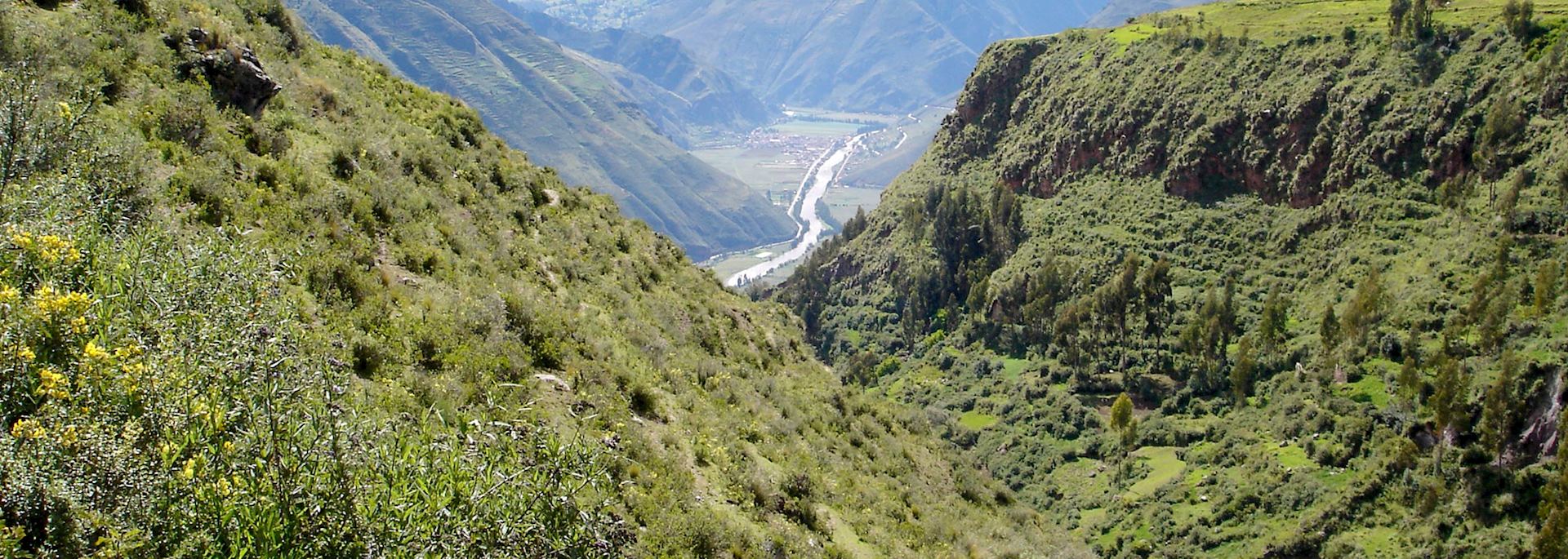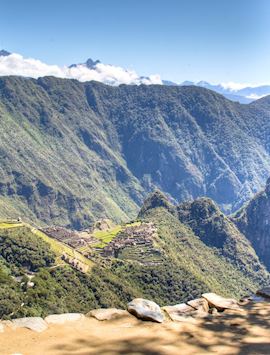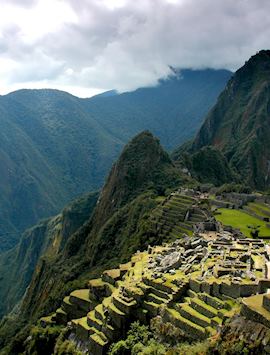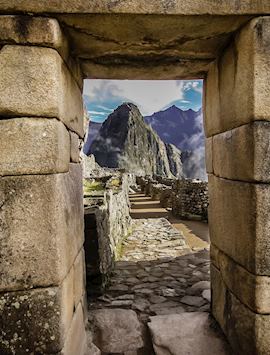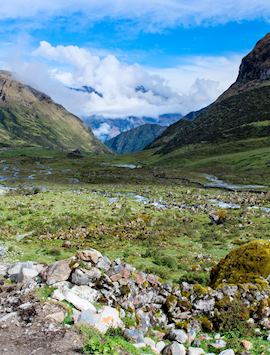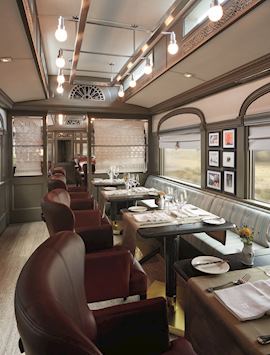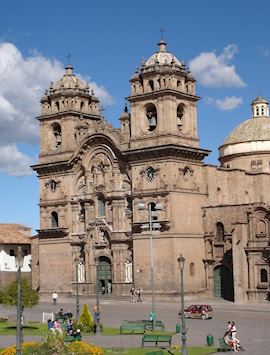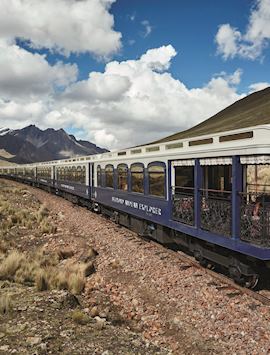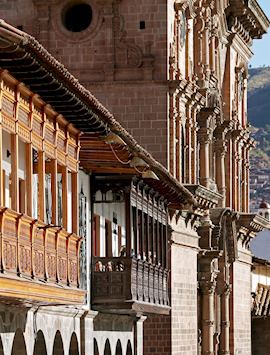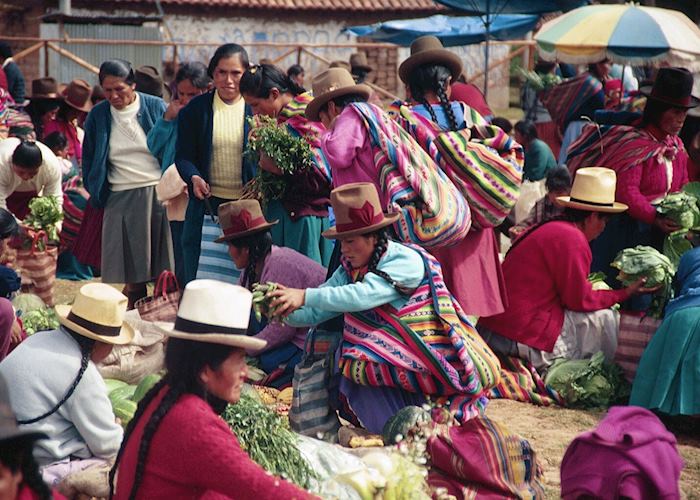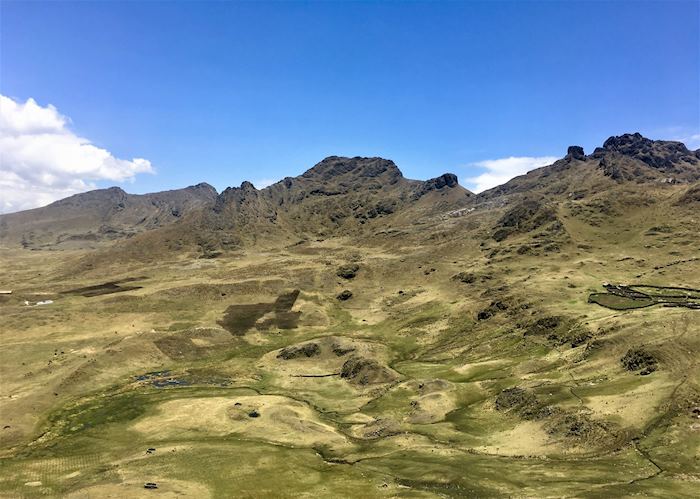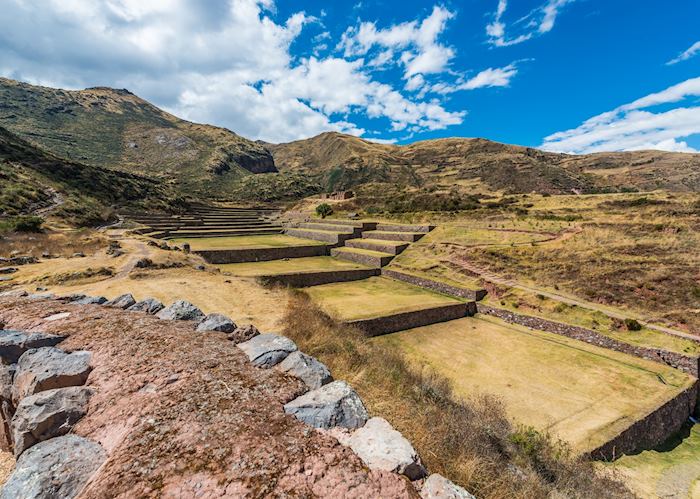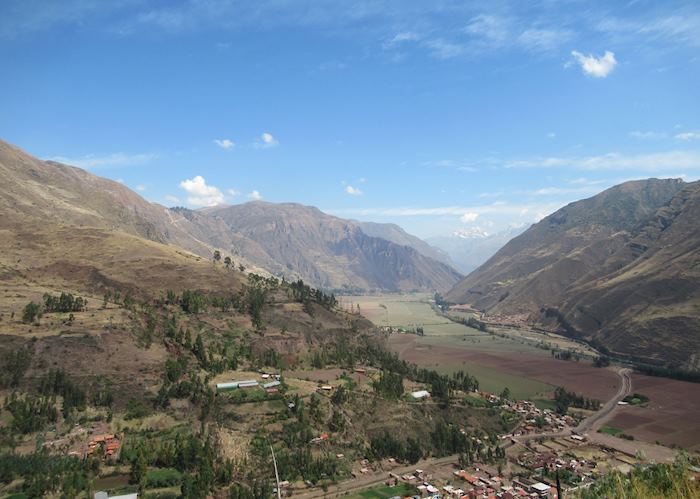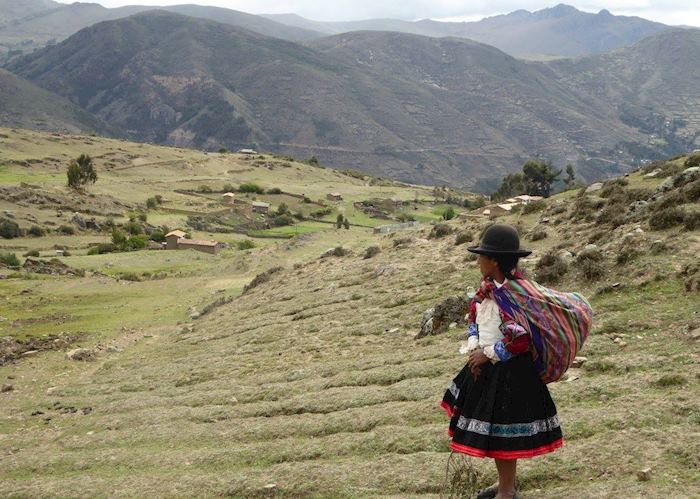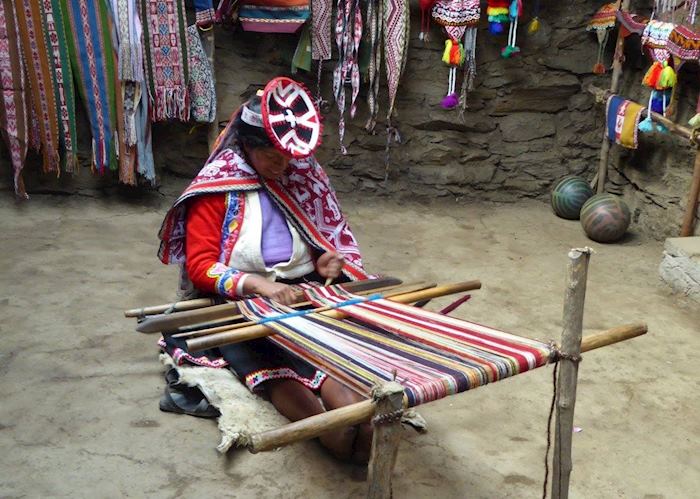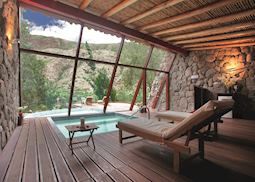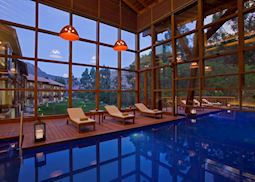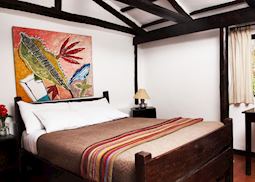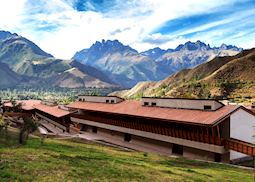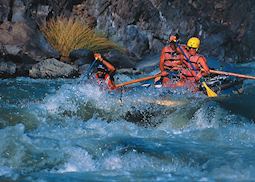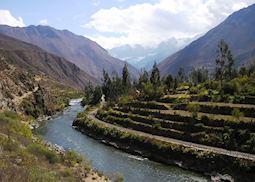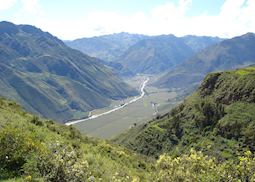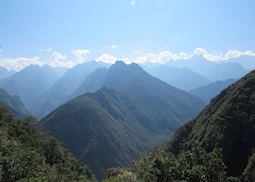Jump to:
The Sacred Valley is a fertile corridor that follows a winding course just northwest of Cuzco all the way to Machu Picchu. Often considered the spiritual and commercial heart of the Inca Empire, it progresses into a slender alluvial plain where all kinds of crops and fruit trees flourish in the temperate valley floor climate. North of Ollantaytambo and onward to Machu Picchu, the valley becomes subtropical and the Urubamba River transforms into a swirling torrent, making further road access impossible. You can, however, continue to Machu Picchu on foot or by train.
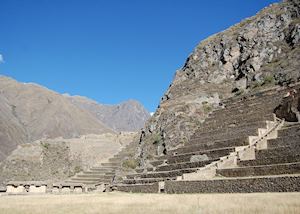 The valley is tightly hemmed in by great folds of the Andes, some stark and bald and some crowned by snow or glaciers. Weaving communities cling to the creases of the foothills, while ruined Inca citadels sit high on the mountainsides, as if keeping watch.
The valley is tightly hemmed in by great folds of the Andes, some stark and bald and some crowned by snow or glaciers. Weaving communities cling to the creases of the foothills, while ruined Inca citadels sit high on the mountainsides, as if keeping watch.
Many visitors think of the Sacred Valley as a transit point between Cuzco and Machu Picchu. But, if you can spare the time, there’s a welter of activities and points of interest here. You’ll find a glut of archaeological sites, one of Peru’s trend-setting restaurants, a range of treks beyond the Inca Trail and numerous adventure activities.
Písac, a town at the eastern mouth of the Sacred Valley, is popular with visitors, who flock to its artisan craft market. Among its handmade wares are silky-soft baby alpaca shawls and scarves. (If Peruvian textiles particularly interest you, we recommend visiting the non-profit weaving cooperative of Awamaki).
Písac then transmutes into a food and produce market on Sundays, where locals from surrounding villages join the throngs of out-of-towners.
Above all the busyness, Písac’s citadel and a sun temple stand on a mountain spur. These ruins display the precise stonework that’s become something of a patent for the Incas. You’ll also see astronomical observation posts and ceremonial baths fed by aqueducts.
Buried deeper into the mountains north of Cuzco, Chinchero is a Spanish colonial settlement that’s also celebrated for its Sunday-morning market. Quechua-speaking women wearing traditional manta shawls and patterned skirts seem to run the place, selling produce and craftwork. Quieter than Písac, Chinchero also bears some Inca remnants, such as a stone throne and terracing.
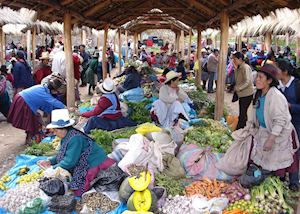 The town of Ollantaytambo has the valley’s gold-star fortress. It rears up like a granite titan at the end of the paved road between Cuzco and the Sacred Valley, dominating the town, which was once an important administrative hub for the Incas. Today its layout and remaining Inca walls give you the closest approximation of what an Inca town must have looked like five centuries ago.
The town of Ollantaytambo has the valley’s gold-star fortress. It rears up like a granite titan at the end of the paved road between Cuzco and the Sacred Valley, dominating the town, which was once an important administrative hub for the Incas. Today its layout and remaining Inca walls give you the closest approximation of what an Inca town must have looked like five centuries ago.
The Sacred Valley’s Inca ruins aren’t limited to fortresses. Moray is made up of three swirls of seven terraces burrowing into the earth like vortexes. They’re thought to have been a latter-day laboratory for growing crops in different microclimates. Peru specialist Fiona explains more about Moray’s allure and the lesser-known Inca sites of the Sacred Valley in her guide to Peru’s Inca wonders beyond Machu Picchu.
Nearby, you’ll find the still-in-use salt pans of Maras, and, overlooking Moray, one of the best restaurants in Peru ― Mil. The brainchild of chef Virgilio Martinez, owner of Central in Lima, it relies on purely local ingredients.
For a more rustic yet authentic Peruvian dining experience, you can dine on a traditional pachamanca (earth-oven) meal in the Sacred Valley. Peruvian food enthusiast Josh explains more about Mil and what a pachamanca involves in his guide to culinary Peru.
With its terrain varying from steep mountain slopes to flat fields of maize, the Sacred Valley is a good spot for mountain biking and horseback riding, no matter your ability. You can, alternatively, go white-water rafting along the surging Urubamba just past Ollantaytambo, or stand-up paddleboarding in calmer stretches of the river.
The Sacred Valley is your start point for the classic Inca Trail, but that’s not the only hiking route leading to Machu Picchu. There are several other options, most involving camping and taking a minimum of three days. We discuss some of the best routes in our guide to trekking to and around Machu Picchu. There’s even a day-walk option called KM 104: ideal if you’re short on time or don’t wish to undertake a multi-day trek.
Best time to visit Peru’s Sacred Valley
Plan your visit for between the months of April and October in order to swerve the Sacred Valley’s rainy season.
who's been there
- 617-223-4920
- Make an inquiry
Suggested itineraries featuring Sacred Valley
Our itineraries will give you suggestions for what is possible when you travel in Sacred Valley, and they showcase routes we know work particularly well. Treat them as inspiration, because your trip will be created uniquely by one of our specialists.
Places near Sacred Valley
- Machu Picchu 23 kilometers away
- Cuzco 52 kilometers away
- The Southern Amazon 180 kilometers away
- Colca Canyon 267 kilometers away
- Arequipa 364 kilometers away
- Puno 384 kilometers away
- Lake Titicaca 408 kilometers away
- Paracas Nature Reserve 425 kilometers away
Photos of Sacred Valley
Accommodation choices for Sacred Valley
We've selected a range of accommodation options for when you visit Sacred Valley. Our choices usually come recommended for their character, facilities and service or location. Our specialists always aim to suggest properties that match your preferences.
-
![Spa, Rio Sagrado, Sacred Valley of Incas]()
Belmond Hotel Rio Sagrado
Sacred Valley -
![Tambo del Inca Luxury Collection, Sacred Valley of Incas]()
Tambo del Inka Luxury Collection
Sacred Valley -
![Hotel Pakaritampu, Sacred Valley of Incas]()
Hotel Pakaritampu
Sacred Valley -
![Sol y Luna Lodge and Spa, Sacred Valley of Incas]()
Hotel Sol y Luna
Sacred Valley -
![Superior Garden Room, El Albergue, Sacred Valley of Incas]()
El Albergue
Sacred Valley -
![Explora Valle Sagrado, Sacred Valley of Incas]()
Explora Valle Sagrado
Sacred Valley
Ideas for experiencing Sacred Valley
Our specialists seek out authentic ways to get to know the places that could feature in your trip. These activities reflect some of the experiences they've most enjoyed while visiting Sacred Valley, and which use the best local guides.
-
White water rafting on the Urubamba ![Rafting in the Sacred Valley]()
White water rafting on the Urubamba
White water rafting on the Urubamba
Today will take you above Cuzco to the Chuquicahuana section of the Urubamba River to raft on class III-IV rapids. Here the river is much cleaner and more fun than in the lower sections, and no previous experience is necessary.
View details -
Moray, Maras & Ollantaytambo ![Ollantaytambo, Sacred Valley of the Incas]()
Moray, Maras & Ollantaytambo
Moray, Maras & Ollantaytambo
Visit the Maras salt pans, the experimental agricultural terraces of Moray and the remnants of Ollantaytambo, once an important Inca administrative center.
View details -
Mountain Biking Excursion ![Sacred Valley of Incas, Peru]()
Mountain Biking Excursion
Mountain Biking Excursion
This incredibly scenic ride starts in the Andean highlands around Chinchero (3,727 m) and ends beside the Urubamba River in the Sacred Valley of the Incas. You cycle amid traditional Andean communities where the way of life has changed very little since the Spanish arrived nearly 500 years ago.
View details -
Chinchero Market & Ruins ![Chinchero market]()
Chinchero Market & Ruins
Chinchero Market & Ruins
During your day of exploration, you visit the colorful local market in the town of Chinchero. This is one of the most traditional markets in all of South America, and you will be surrounded by locals in their traditional dress all buying and selling their produce.
View details -
Huchuy Qosqo Trek ![Views of the Sacred Valley from the Huchuy Qosqo trek]()
Huchuy Qosqo Trek
Huchuy Qosqo Trek
The trail takes you through small hamlets and affords stunning views of the Sacred Valley and Písac below. The trail climbs steadily to a pass at 4,200 m, beyond which you will descend to a beautiful canyon, where a picnic lunch is served.
View details -
Day hike (KM 104 Trail) to Machu Picchu ![KM104]()
Day hike (KM 104 Trail) to Machu Picchu
Day hike (KM 104 Trail) to Machu Picchu
A trek from the Sacred Valley to Machu Picchu, arriving at the Inti Punku Sun Gate for an unforgettable view of Machu Picchu.
View details -
Písac Market and Ruins ![Pisac]()
Písac Market and Ruins
Písac Market and Ruins
In the small colonial village of Písac, spend the morning exploring the colorful Indian market, with its wide variety of textiles and ceramics.
View details

